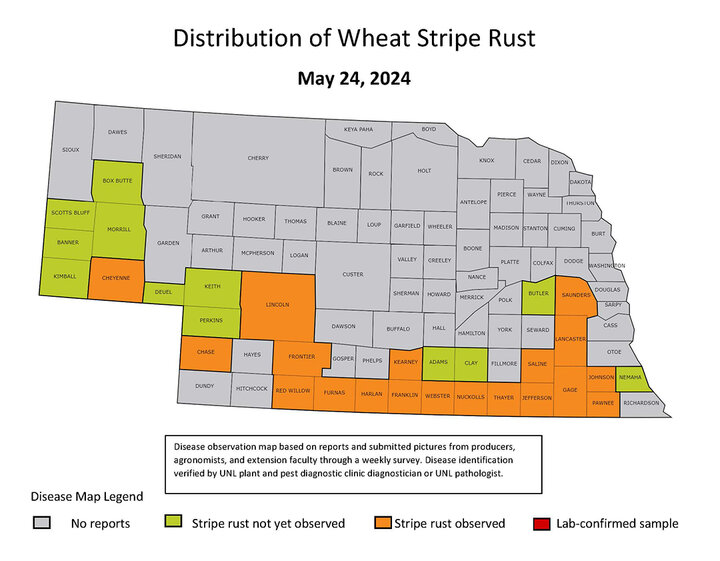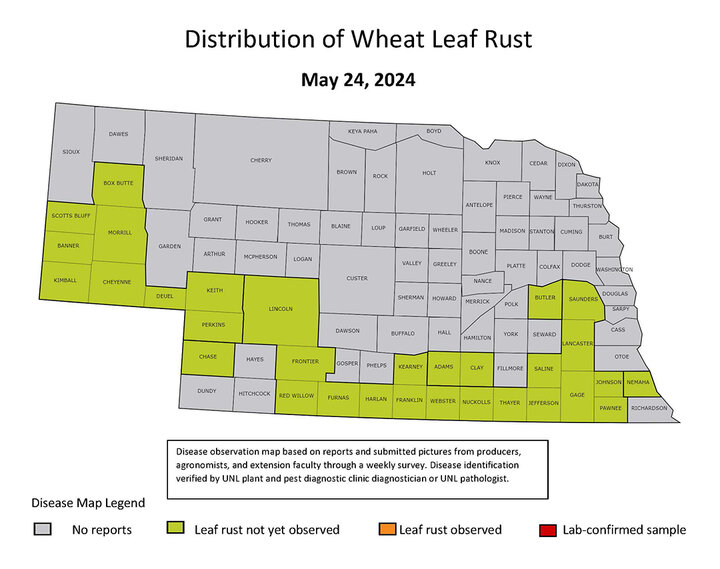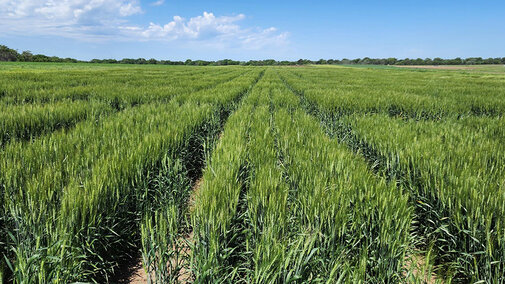This week, wheat disease surveys were limited to research plots at Havelock Research Farm (Figure 1) in Lincoln (Lancaster County) and the Eastern Nebraska Research, Extension and Education Center (ENREEC) near Mead (Saunders County). At both locations, stripe rust severity had increased to cover most of the flag leaf in susceptible varieties/lines (Figure 2). Septoria tritici blotch (Figure 3) was present at low to moderate levels in the lower to mid-canopy. Symptoms of Fusarium head blight (FHB) were just starting to show (Figure 4) at trace levels.



Saunders County and Cheyenne County are the latest counties where stripe rust has been confirmed (Figure 5). As of May 23, leaf rust had not been found or reported in Nebraska (Figure 6).


Management
Although the Fusarium risk tool is currently showing a low risk for FHB in Nebraska, it is likely that we will see FHB in some fields due to the recent rains that occurred before and during flowering. An application of Miravis Ace, Prosaro Pro, Sphaerex, Prosaro, Caramba or Proline fungicide at early flowering can significantly reduce losses to FHB. Observe pre-harvest label restrictions when applying a fungicide to suppress FHB.
Fungicide application timing for stripe rust, leaf rust and foliar fungal leaf spots (Septoria tritici blotch and tan spot) is best at 50-100% flag leaf emergence. However, application timed to suppress FHB at early flowering will also effectively control all foliar fungal diseases.
Wheat Disease Survey
Please contribute to the 2024 rust tracking map to help Nebraska Extension monitor the movement of stripe and leaf rust in Nebraska.

